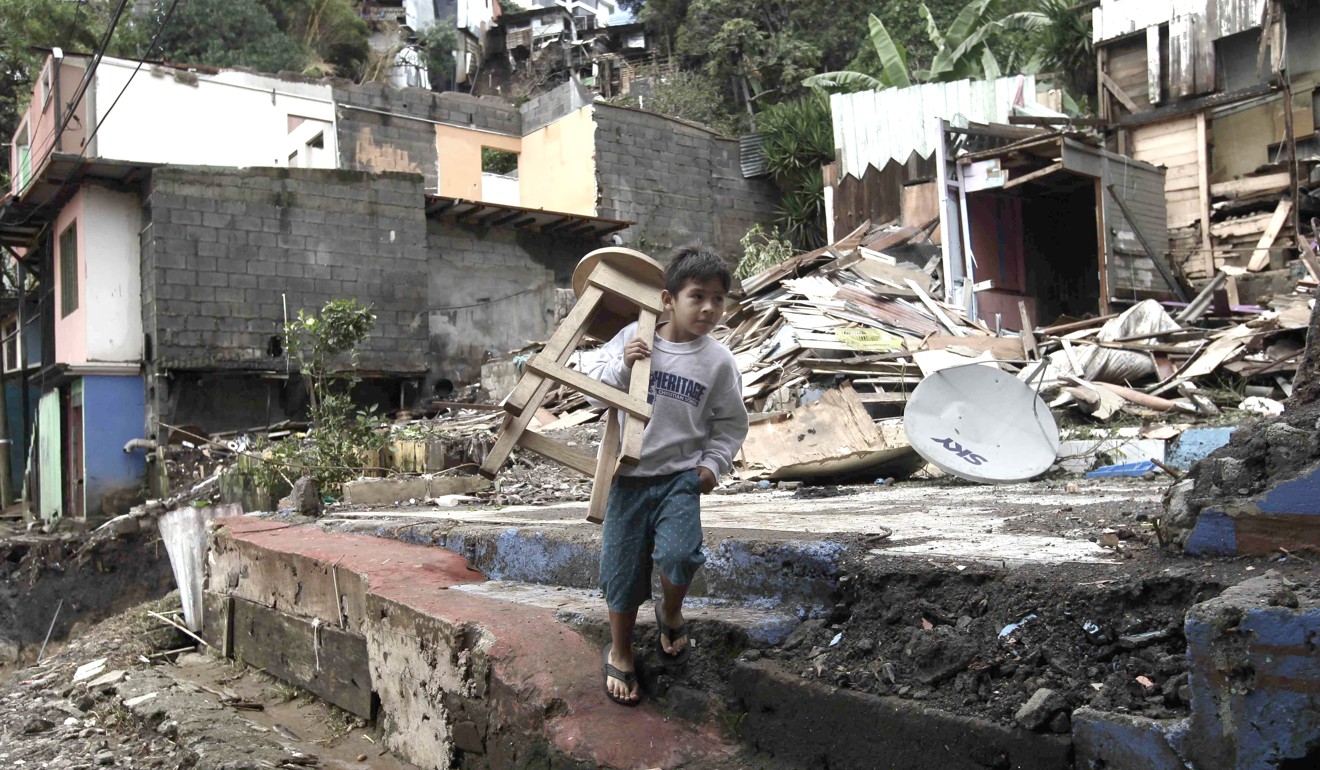
Authorities call for calm as Hurricane Nate forms in Gulf
Altogether, 14 storms have formed across the Atlantic this season, killing hundreds in the US, Mexico and the Caribbean and causing an estimated US$300 billion damage
Hurricane Nate gained force as it continued rapidly moving over the central Gulf of Mexico on Saturday after drenching Central America in rain that was blamed for at least 21 deaths.
Louisiana and Mississippi officials declared states of state of emergency and Louisiana ordered some people to evacuate coastal areas and barrier islands before its expected landfall on Saturday night or early Sunday. Evacuations began at some offshore oil platforms in the Gulf.
Mississippi’s government said it would open 11 evacuation shelters in areas away from the coast, with buses available for people who cannot drive.

The US National Hurricane Centre warned that Nate could raise sea levels by up to 2.1 metres from Morgan City, Louisiana, to the Alabama-Florida border. It had already had caused deadly flooding in much of Central America.
The centre added metropolitan New Orleans and Lake Pontchartrain to its latest hurricane warning.
The storm had maximum sustained winds of 128.74km/h and was likely to strengthen over the Gulf of Mexico.
The storm was more than 500km south-southeast of the mouth of the Mississippi River and moving north-northwest at 35km/h.
Authorities cancelled Friday afternoon classes in parts of Mexico’s Caribbean coast state of Quintana Roo, where Cozumel and Cancun are located. But Governor Carlos Joaquin said it appeared the storm would stay well offshore and not hit land.
“That, I believe, is good news,” he said.

In Nicaragua, Nate’s arrival followed two weeks of near-constant rain that had left the ground saturated and rivers swollen. Authorities placed the whole country on alert and warned of flooding and landslides.
Nicaragua’s vice-president and spokeswoman, Rosario Murillo, said that at least 11 people had died in that country due to the storm. She did not give details on all the deaths, but said two women and a man who worked for the Health Ministry were swept away by a flooded canal in the central municipality of Juigalpa.
Costa Rica’s Judicial Investigation Organism blamed seven deaths in that country on the storm and said 15 people were missing. Flooding drove 5,000 residents into emergency shelters.
In Honduras, there were three dead and three missing, according to Oscar Triminio, spokesman for the country’s firefighters.

Damage caused by the storm prompted Costa Rican officials to postpone a World Cup qualifying soccer match with Honduras, which had been scheduled for Friday night.
In Louisiana, Governor John Bel Edwards declared a state of emergency and mobilised 1,300 National Guard troops, with 15 heading to New Orleans to monitor the fragile pumping system there.
With forecasts projecting landfall in southeast Louisiana as a Category 1 hurricane, Edwards urged residents to prepare for rainfall, storm surge and severe winds – and to be where they intend to hunker down by “dark on Saturday”.
Louisiana’s governor said Nate is forecast to move quickly, rather than stall and drop tremendous amounts of rain on the state. State officials hope that means New Orleans will not run into problems with its pumps being able to handle the water.
Edwards warned, however, against underestimating the storm.

